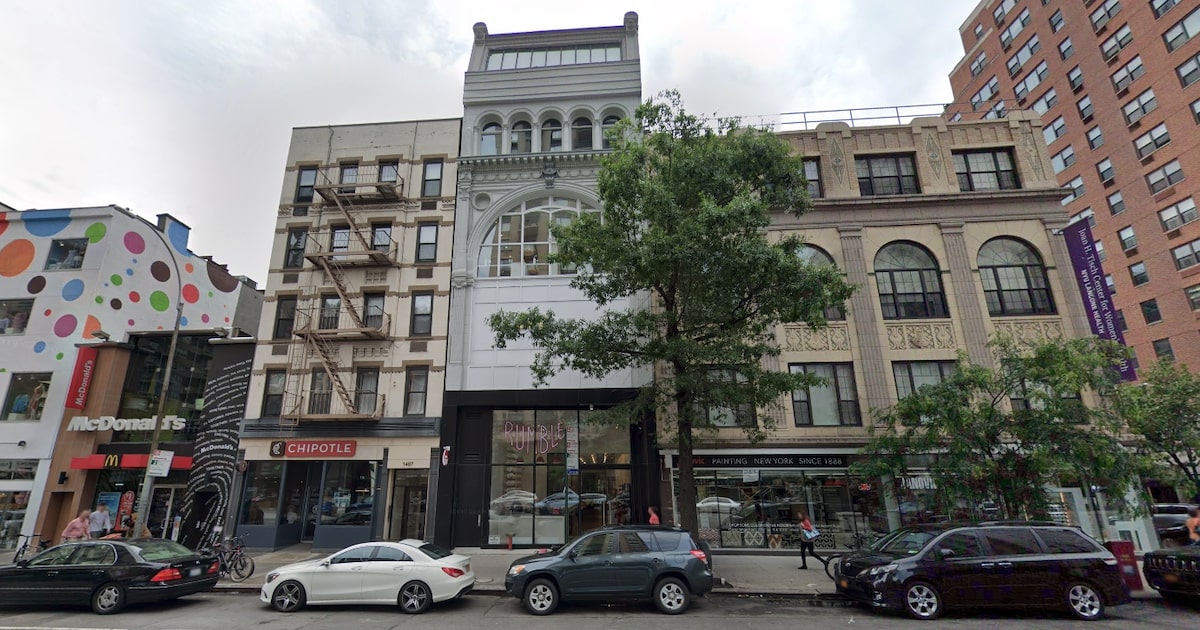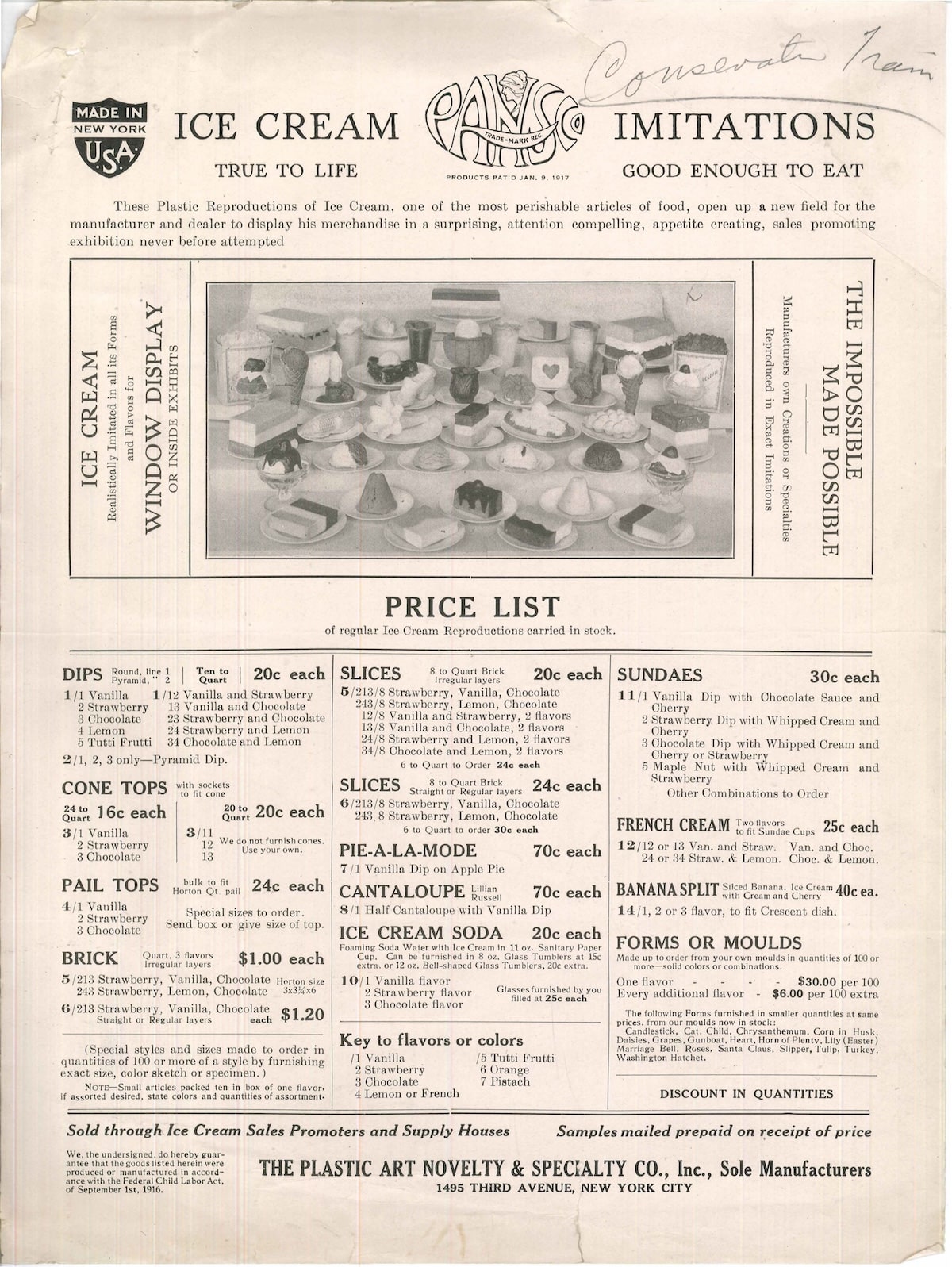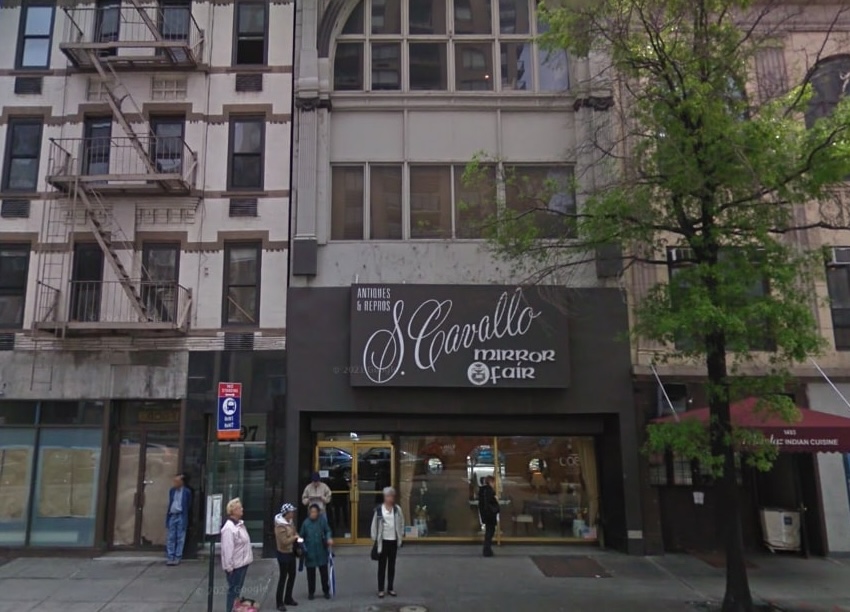
Google Maps, 2019
Most people walking past 1495 Third Avenue—between 84th and 85th streets—have no idea just how weird and wild its past really is.
Advertisement
Built in 1906, the building has been home to a stationery shop, a fake food factory, a radio retailer, and a pair of suspected Nazi sympathizers. Most recently, it housed Rumble, the boxing gym chain. But long before fitness classes took over the storefront, 1495 was part of a very different Upper East Side.According to Daytonian In Manhattan, the building was commissioned by Bavarian-born printer Max J. Roth, who had been operating a stationery business across the street at 1496 Third Avenue. He hired architect Charles Stegmayer to design a new space, and the result was an ornate, four-story structure with an enormous arched window that lined up with the Third Avenue El. It also featured Corinthian pilasters, decorative swags, and a steep mansard roof. Roth’s business—advertised as “wholesale and retail stationery”—sold everything from Kodaks and Victrolas to sporting goods and toys.
By 1917, Roth had leased space to inventor C. Jaeger, who had just patented a novel solution for restaurants and bakeries: fake food displays. His replicas of fruits, meats, pastries, and even cigars became so successful that he incorporated the Plastic Art Novelty & Specialty Co., with Roth as a one-third partner. Scientific American described the fake cigars as so convincing that they mimicked “form, size, color, manner of assembling or bunching, labeling and any other characteristic of the make.”

U.S. Food Administration. Pennsylvania State Food Administration. Division of Conservation. 8/1917-2/1919. The Plastic Art Novelty And Specialty Company Ice Cream Imitations Advertisement. 1917-09-01/1918-10-31. Retrieved from the Digital Public Library of America.
Roth stepped back from the business in the 1920s. Then, in 1933, the building was leased by German immigrants Willy Bolle and Emil Detzel, furniture dealers who were also early German-language radio broadcasters. In 1937, Bolle was named by Congressman Samuel Dickstein as a known Nazi sympathizer. The FBI began watching closely.
Advertisement
The broadcasts eventually drew the attention of the Loyal Americans of German Descent, who alleged that Bolle and Detzel were using their daily half-hour program to give “direct aid to the Nazis.” In July 1942, both men were arrested by the FBI and brought before the Enemy Alien Control Board.After the war, the building changed hands again. In the 1950s it was home to Brothers Radio Corp., a TV and electronics shop. By the late 1990s, it had become the Sevilla Art Studio, and later, S. Cavallo Mirror Fair—an antiques and reproductions store operated by the building’s owners.

Google Maps
Most recently, the space was occupied by Rumble, the trendy boxing gym with nightclub lighting and celebrity trainers, which closed because the landlord is planning to “reclaim the building for a residential redevelopment program project,” Rumble stated at the time of its closing. It’s not clear what’s next for the building, but it’s safe to say its future will have a hard time topping its past.
Have a news tip? Send it to us here!




